Whenever we do a painting project, the follow-up questions we get are, "what color is that?" and "what paint sheen is that?" I'll geek out on paint colors and color theory another day, but today it's all about paint sheen. Selecting a paint sheen is just as important as selecting the color because it can change how the color looks! I have a few rules that I generally stick to but let's first talk about what paint sheen even is.

Lantern | Sconce | Shelves | Desk | Copper Canister | Linen Magazine Holder | Apple iMac
What is paint sheen?
When you go to Lowe's or your local paint shop, and ask them to mix up a gallon of any color, they're going to ask you what sheen you want. So basically, how shiny do want your paint to look?
In other words, the more enamel in your paint, the higher your sheen and the glossier it will be! It will also be much more durable to scuffs, scratching, and staining.
However, the glossier the sheen, the more expensive the paint will be. But they do come in many different price points and even a low sheen can be a really great option, especially if you're trying to hide imperfections in your walls.
Here's a graphic to reference!

In the beginning of our DIY years when we were on a tighter budget, we went with the lowest, flattest sheen because it hid imperfections and is super budget friendly! The downside of a low sheen is it's not very scrubbable and washable. Make your attempts to wipe clean, but odds are you'll have to touch-up the paint to keep your walls looking clean.
Even flat and matte paint have come a long way though! If you buy a higher quality line, they tend to be more wipeable.
Fun fact: glossier walls used to be associated with wealth! I don't think we think this anymore 😂
My Paint Sheen Preferences
While everyone has their own preferences, I most commonly use eggshell on my walls and a semi gloss sheen on my doors and trim. In the Painting 101 post I shared this formula we used in our primary bedroom, along with all our favorite painting supplies. Now this is where it gets a little confusing because every paint brand names their paint colors differently. For example Farrow & Ball's version of Eggshell is actually called "Modern Emulsion," and their version of semi-gloss is called "Modern Eggshell."
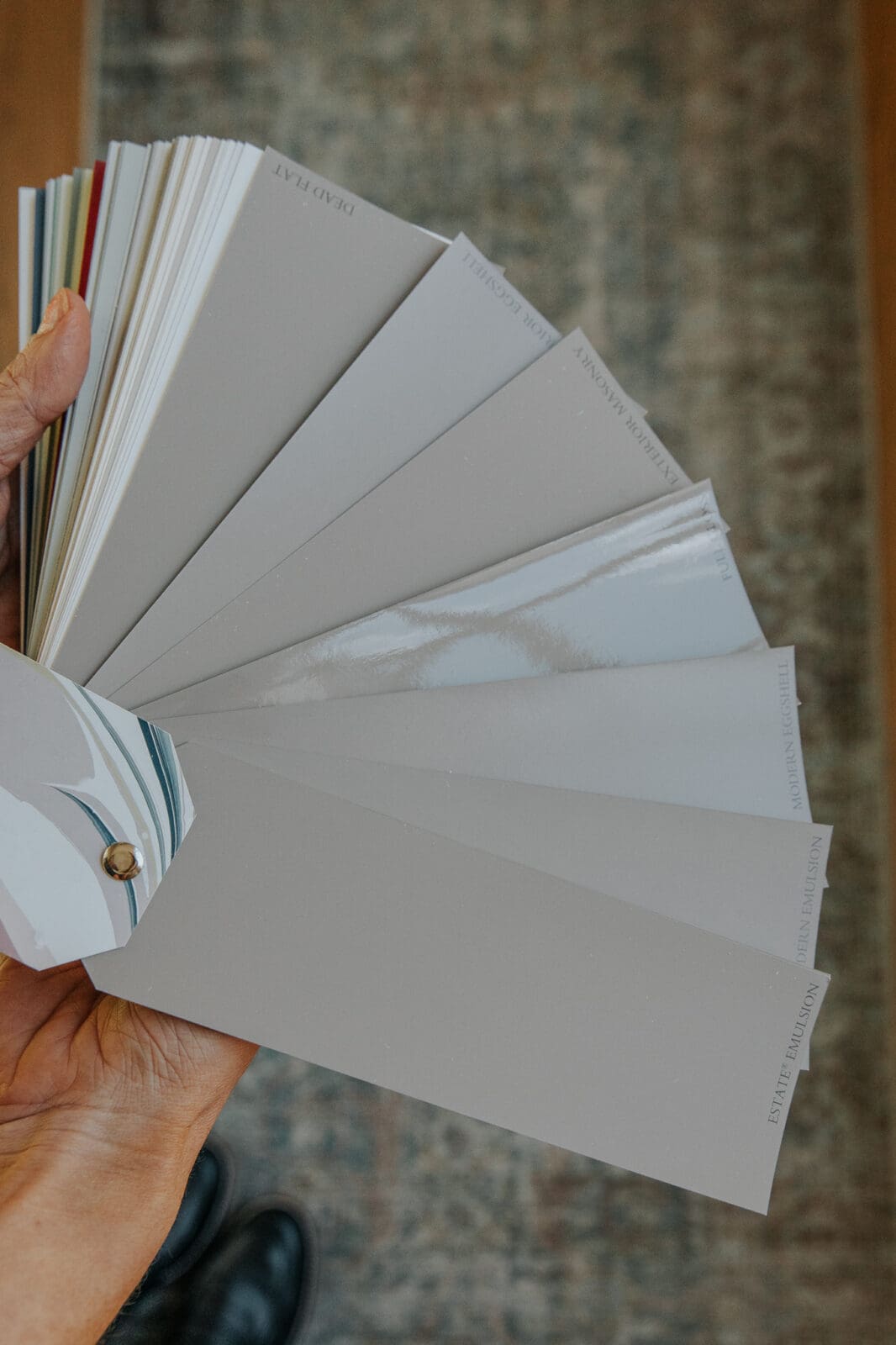
Way to throw a curveball! For our bedroom we used Modern Emulsion on the walls, and Modern Eggshell (the slightly glossier version) on our trim, baseboards, and doors. We did NOT go out of our way to paint all of the box-trim Modern Eggshell. I think that would have just been too much, but I love featuring the trim and baseboards in this way, especially when there's no contrast in color.
Modern Emulsion Walls + Modern Eggshell Trim

I personally don't love a heavy texture on my walls. I like my walls to look smooth and airbrushed. The number one way to achieve this is through a low gloss. Gloss is going to highlight any imperfections so beware if you want to keep your imperfections discreet.
Since the glossier trim reflects more light, I think the shadows and highlights in the trim are really accentuated which is why I love to go glossier!
My #1 tip if you're painting your walls and trim the same color but different sheens is to always paint the trim first and the walls second. It's so much easier to cut in on the walls after the trim has been painted, vs. the other way around.
Here's some examples of different paint sheens I've used in the past!
Matte

Again, I had a moment with matte paint because it's what was in the budget! I do love how smooth it looked on this paneled wall, plus it hid any of our nail hole imperfections since we DIY'd this.
Eggshell

Oh Eggshell, you'll always have my heart. Velvety smooth and flawless! Eggshell is a step up from Matte in both quality and gloss, but it's still going to hide any imperfections and texture you have on your wall.
Modern Emulsion

Again, Farrow & Ball has their own version of Eggshell that's somehow even more velvety smooth. Since the bonus room had so much paneling we decided to spray all of it in Modern Emulsion, including the trim! I love this tone on tone of color and sheen in here.
Satin

In the $1000 kitchen makeover in our last house, we painted all of the cabinets in a satin. Higher sheen means more enamel, which means more durability. Since cabinets get a lot of daily touching and wear, Satin was the best option for us. If we went any higher in sheen, the dings and dents in the cabinets would have stood out even more.
Looking forward, I have high hopes to use some glossier sheens in this house. I'm really into that lacquered look right now and I'd like to get more playful with that.
What other paint related questions do you have?
Leave a Reply

WE'RE CHRIS + JULIA
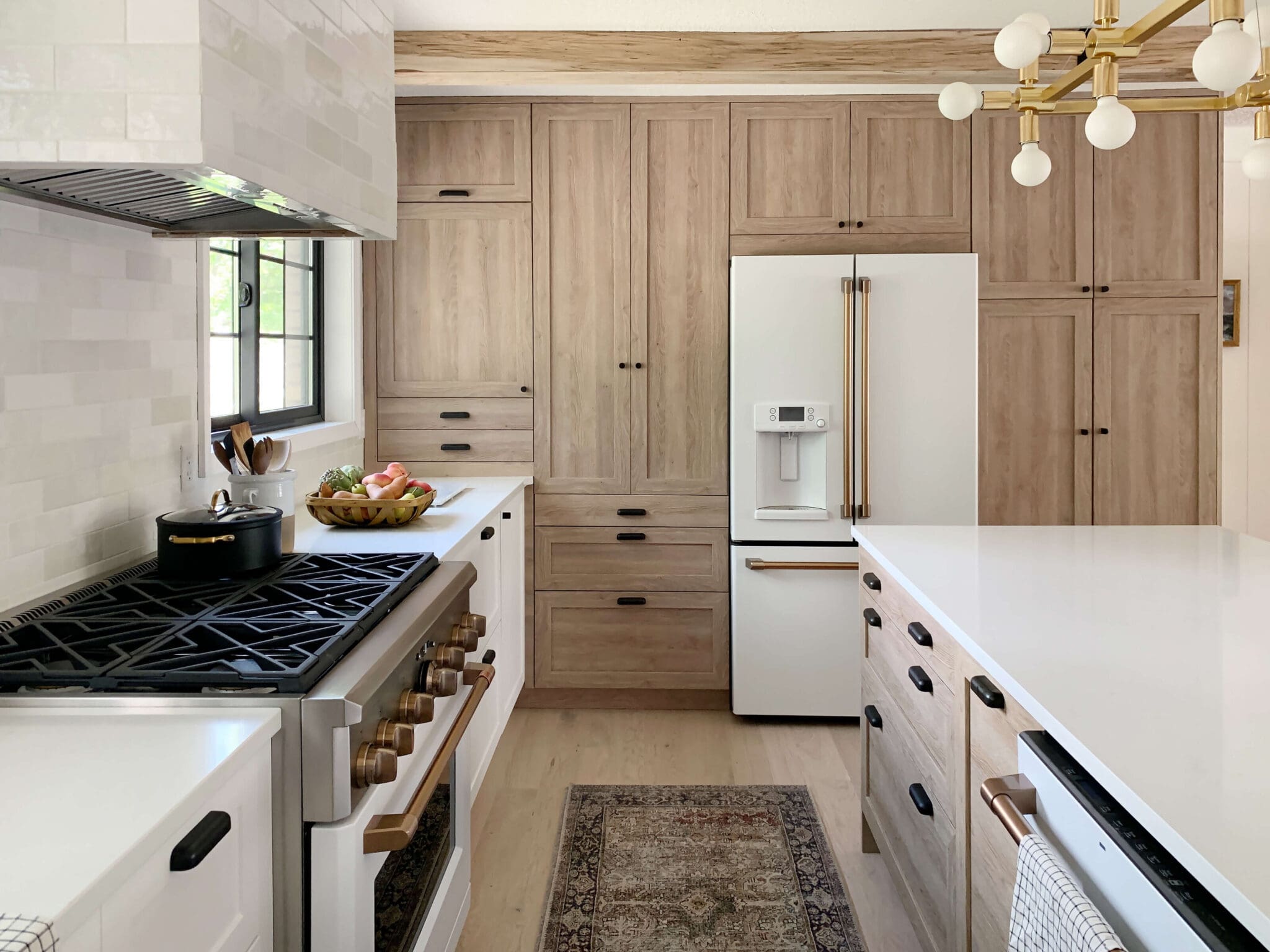
Portfolio
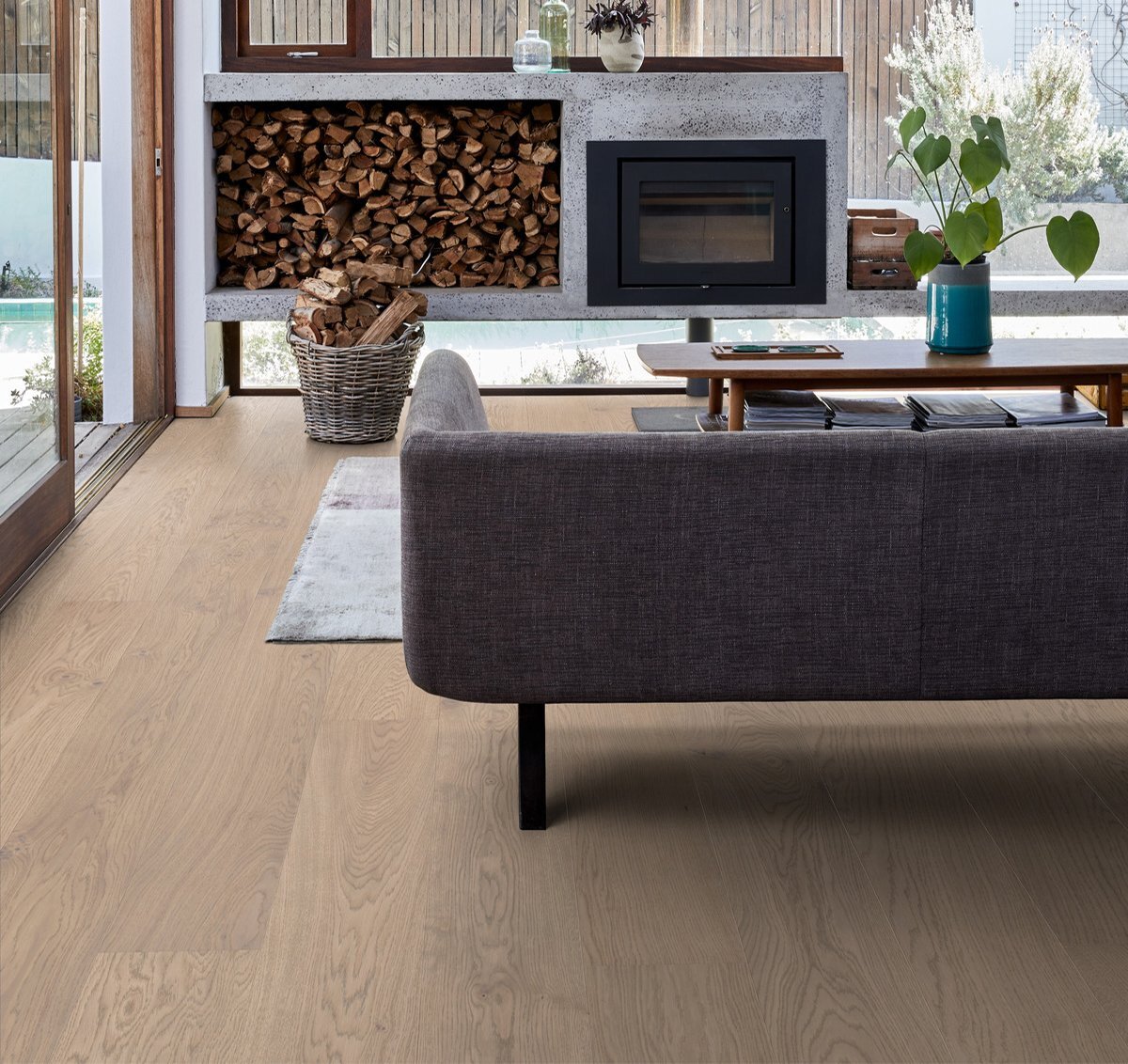
Projects
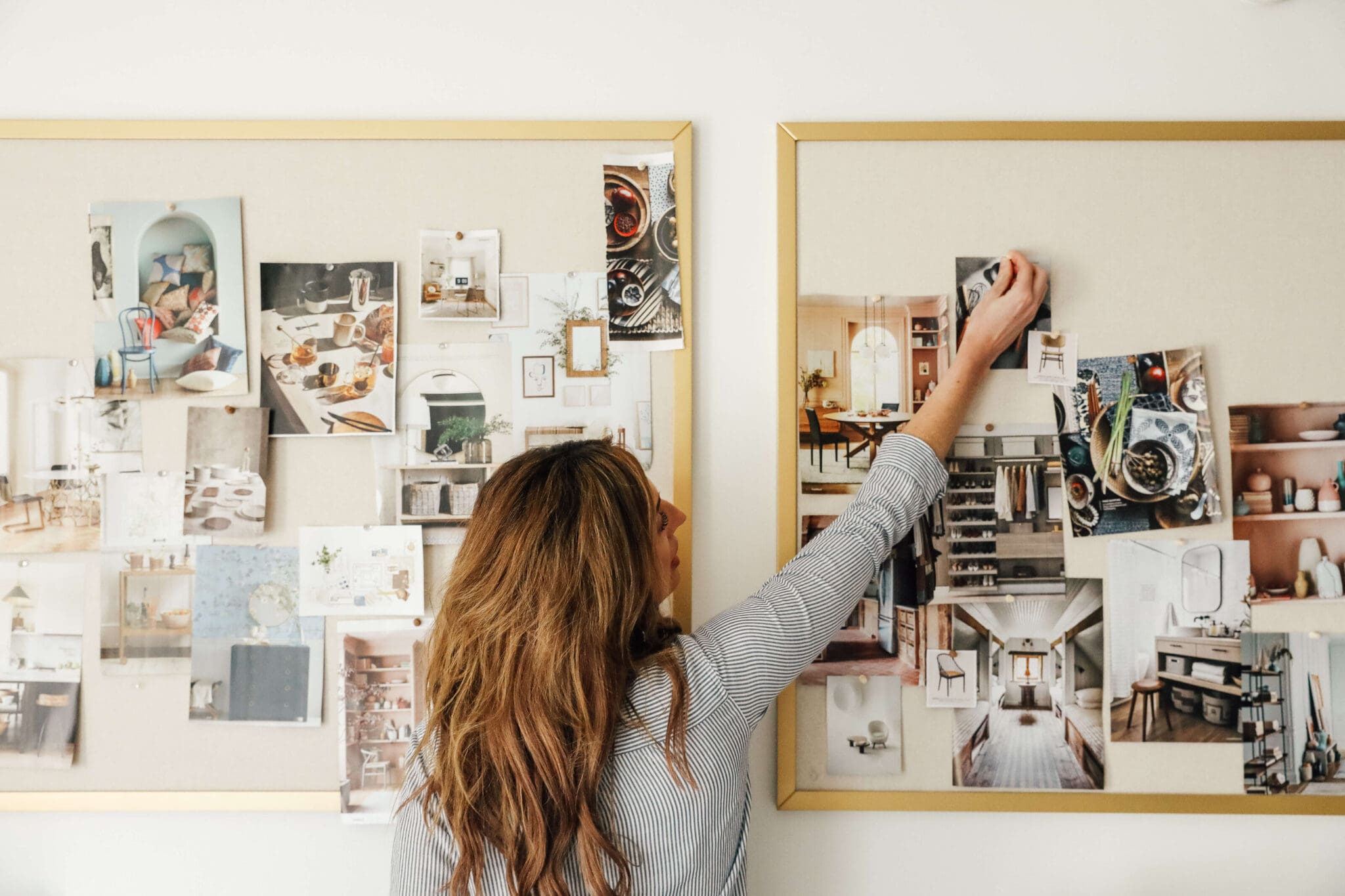

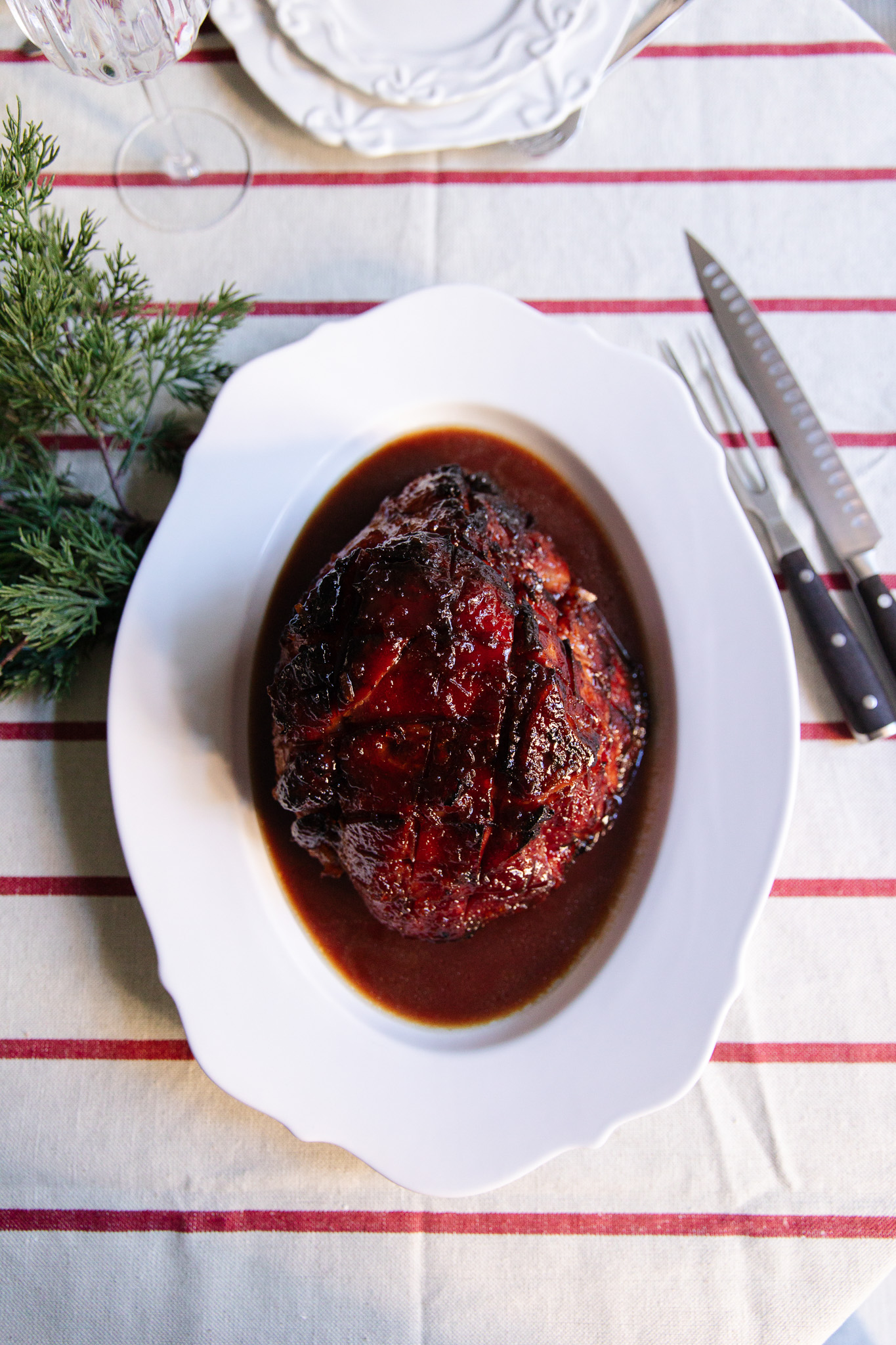
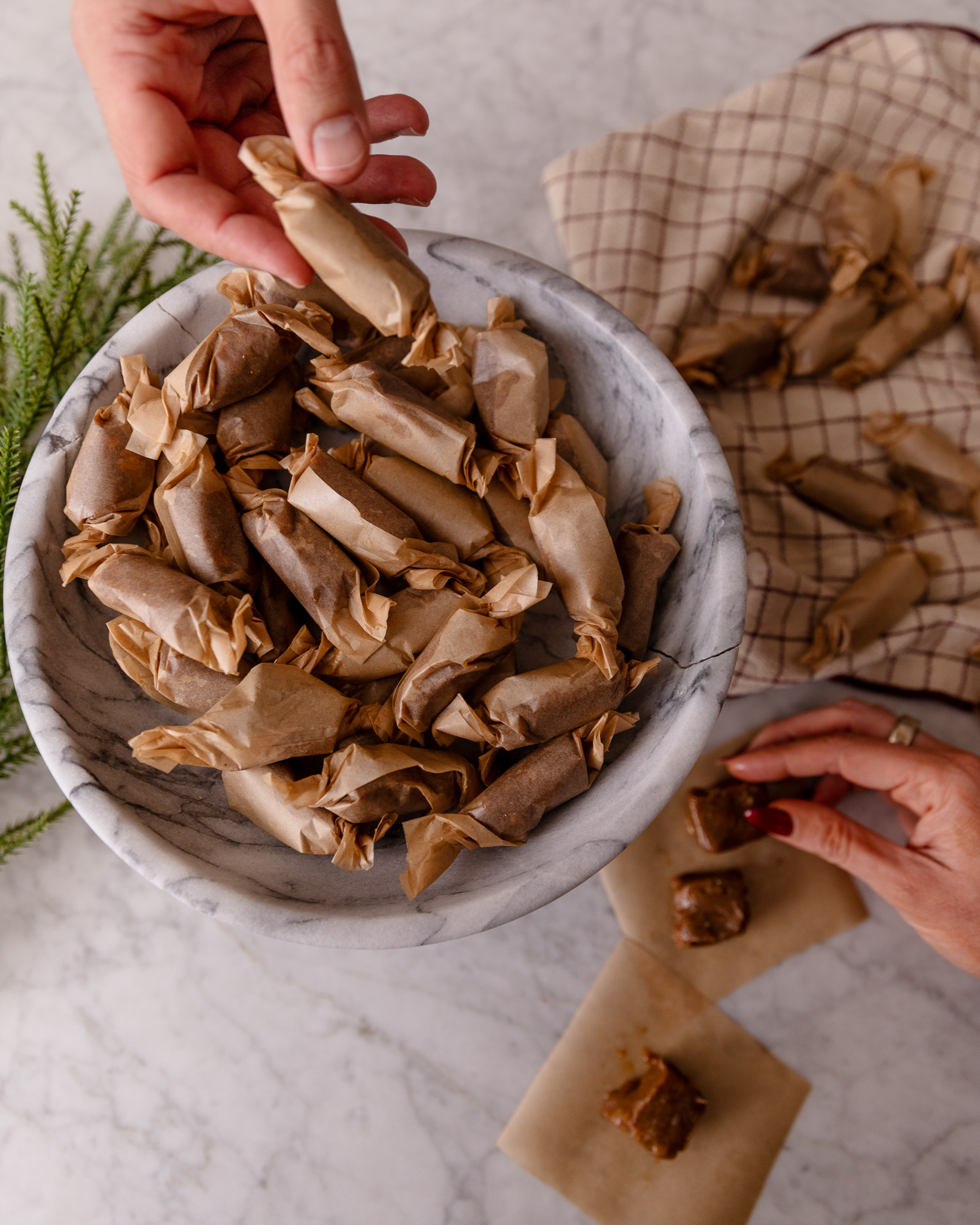

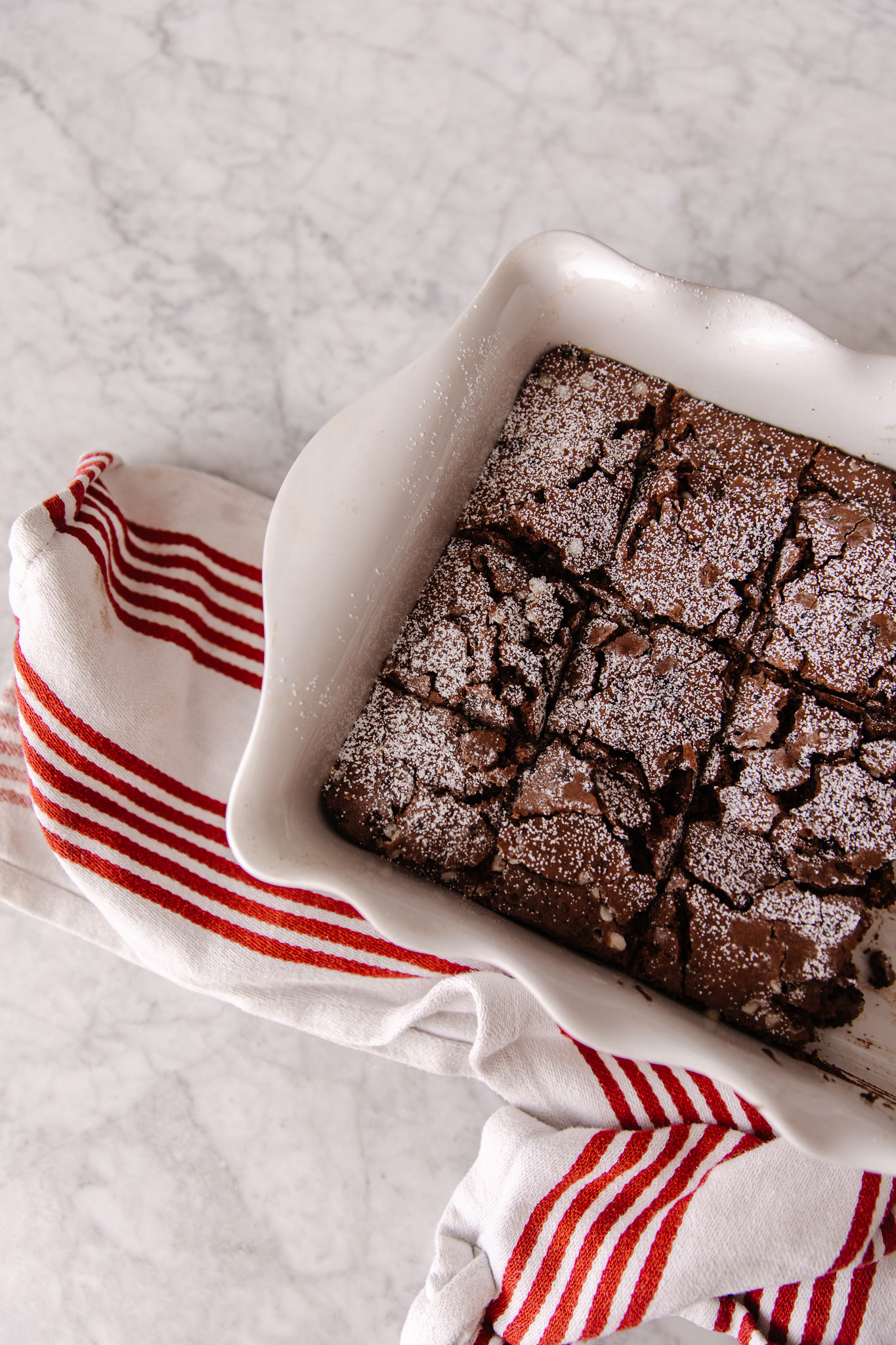
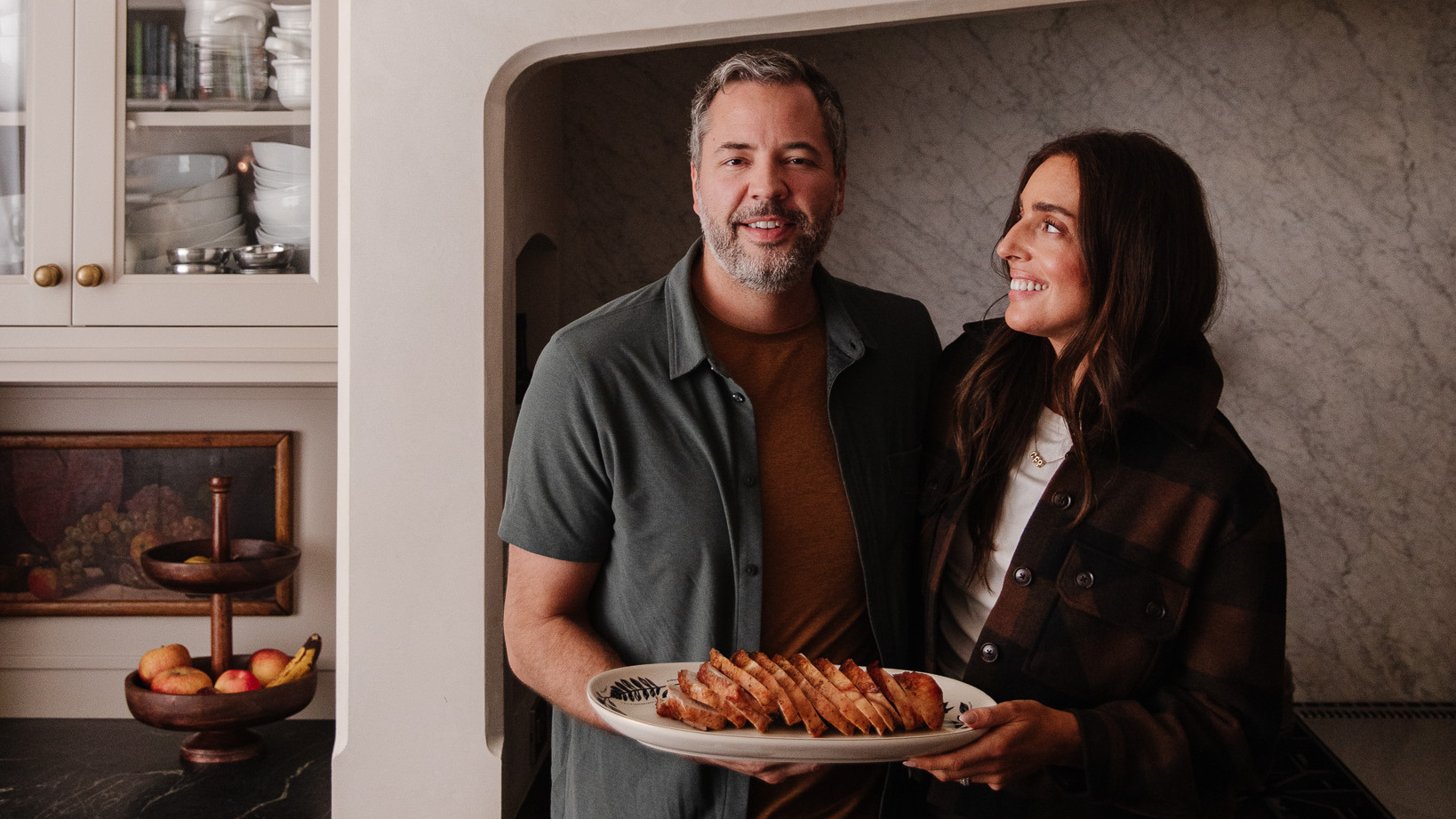

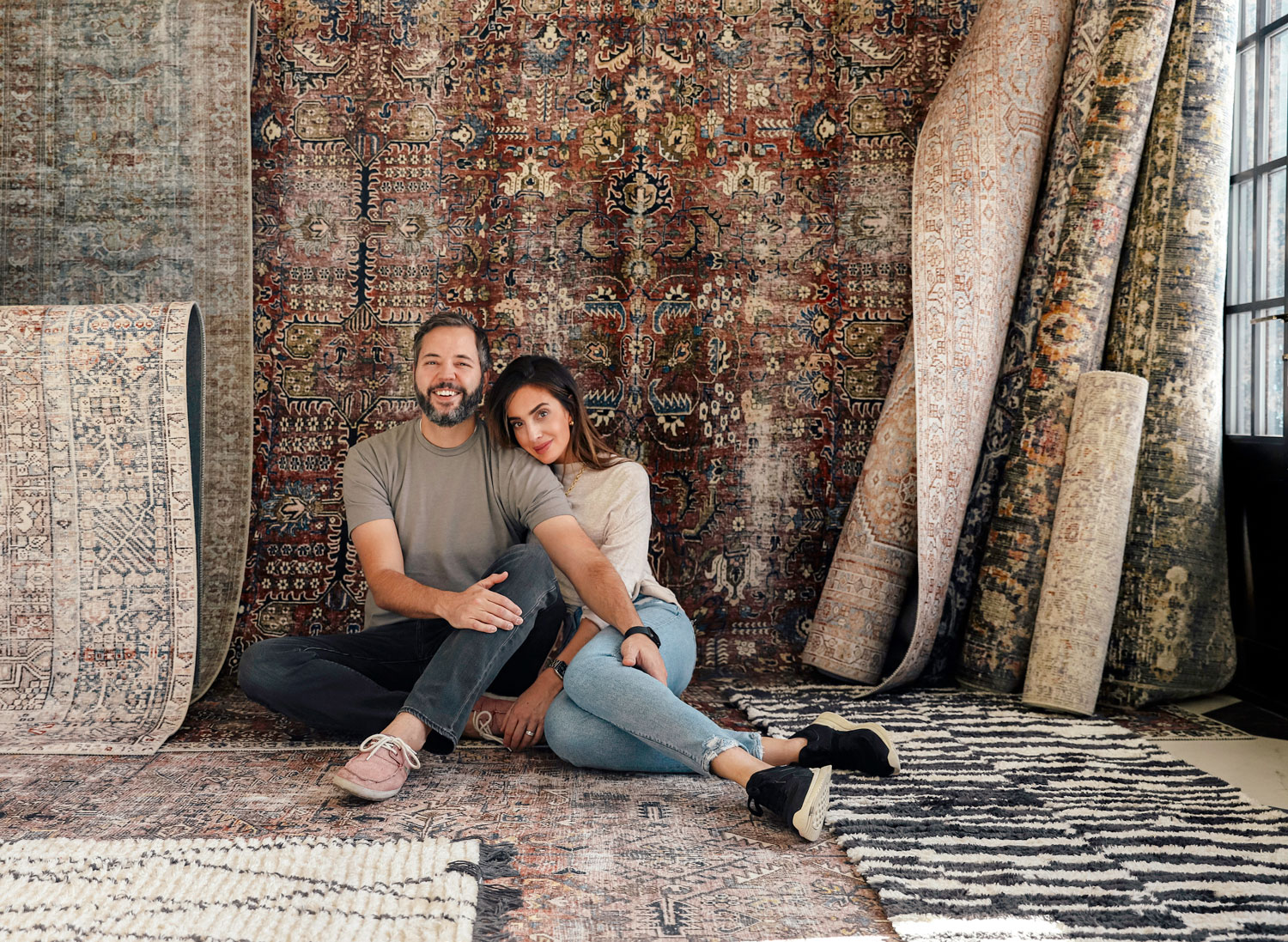
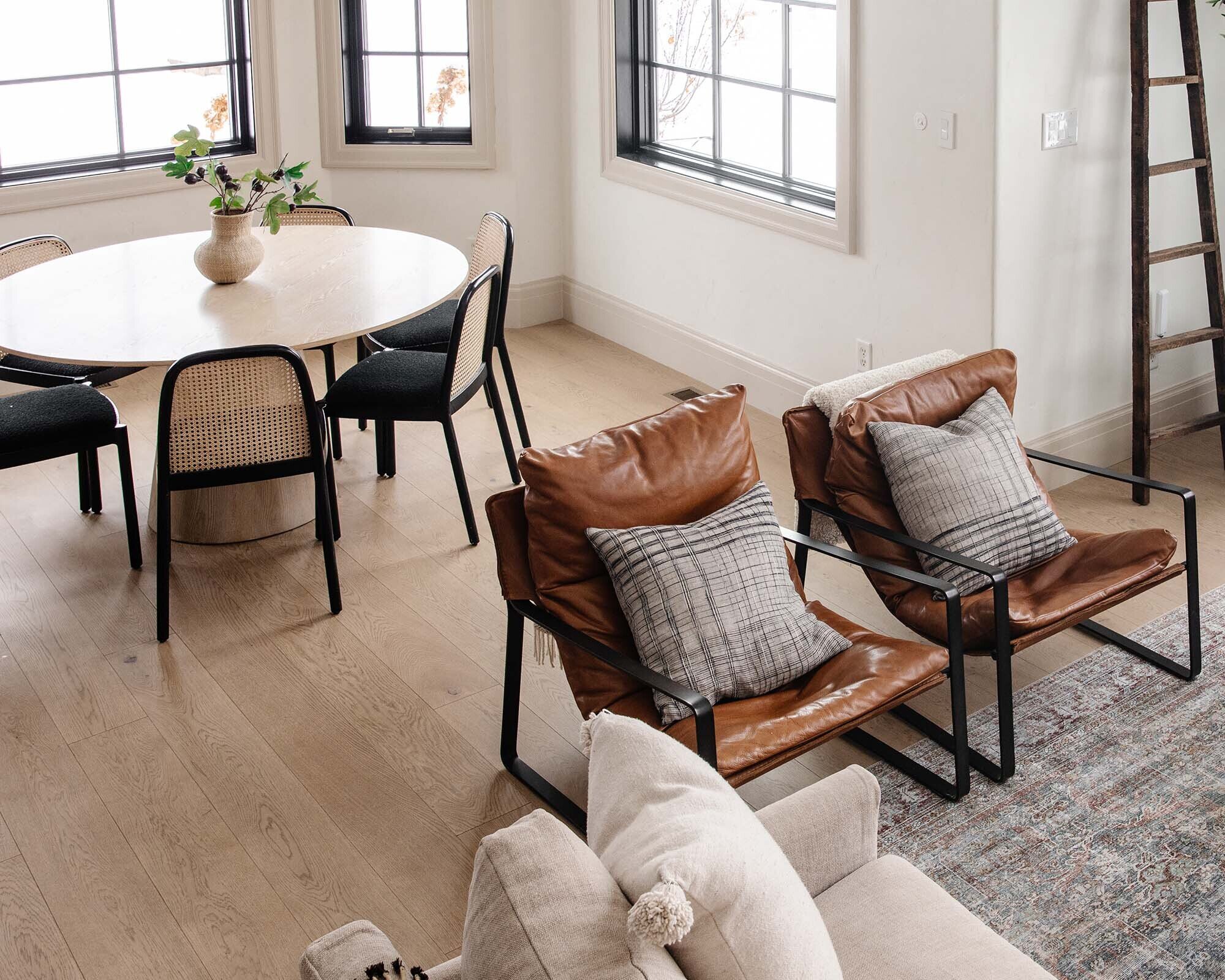
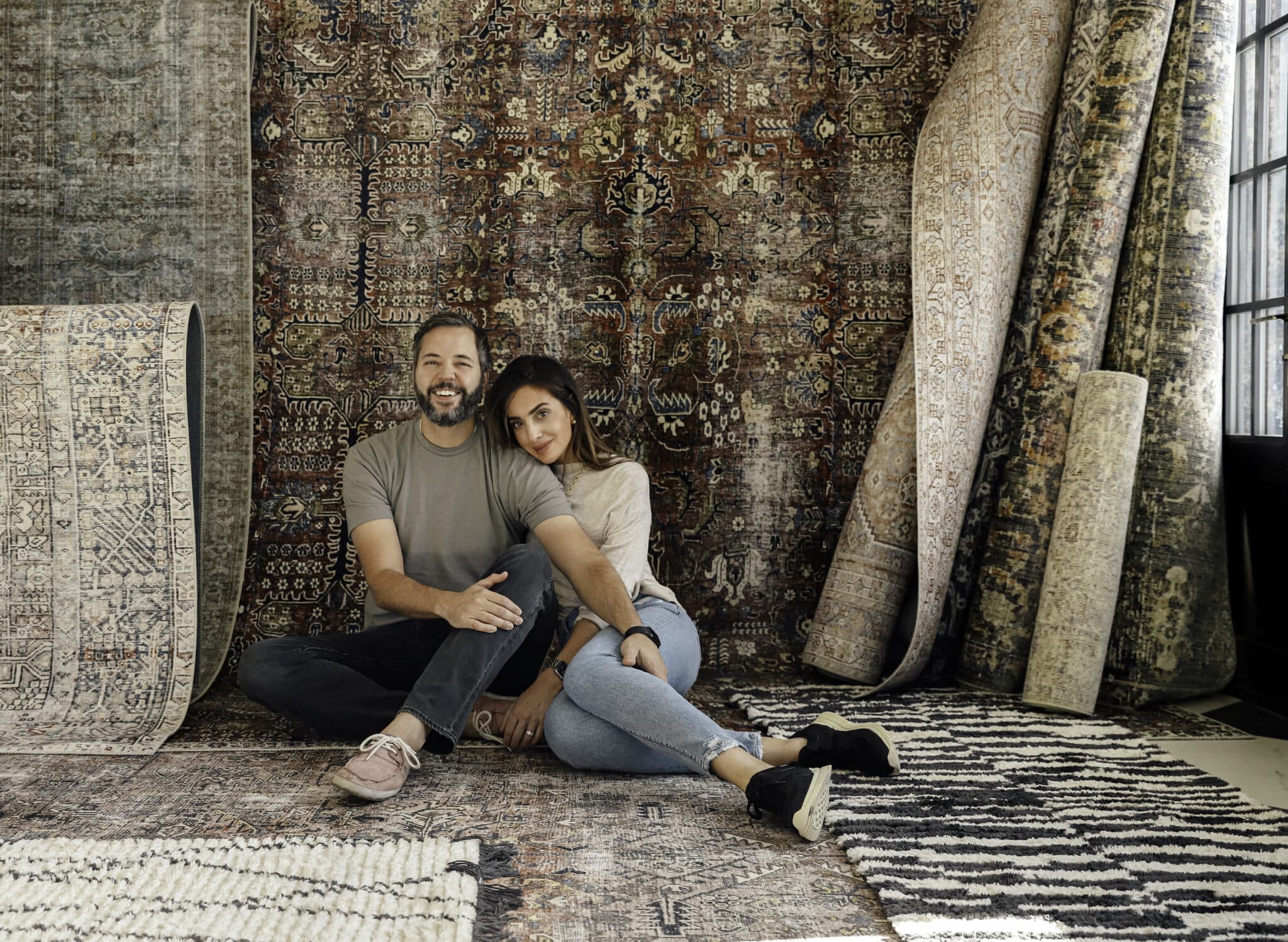

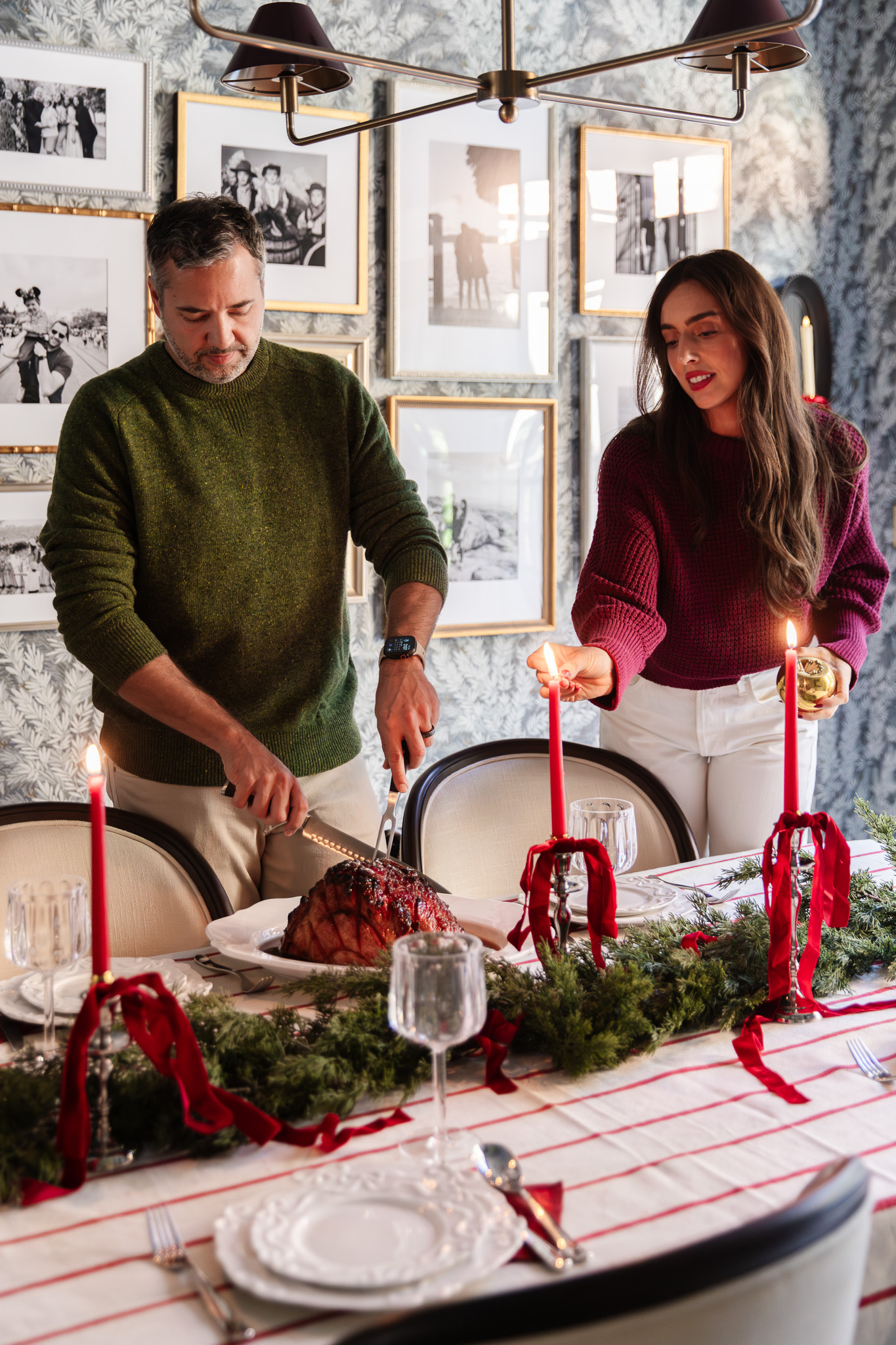
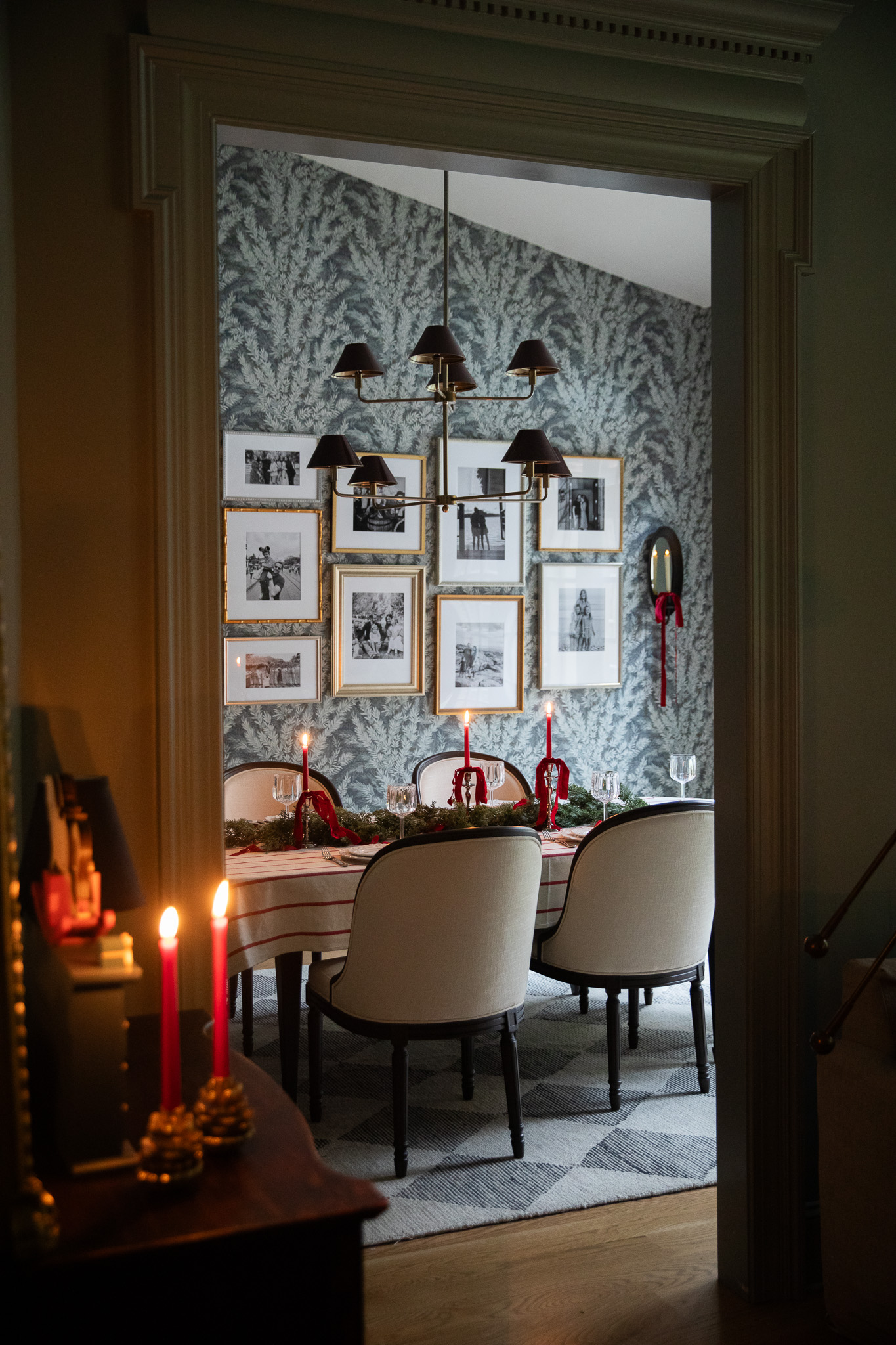
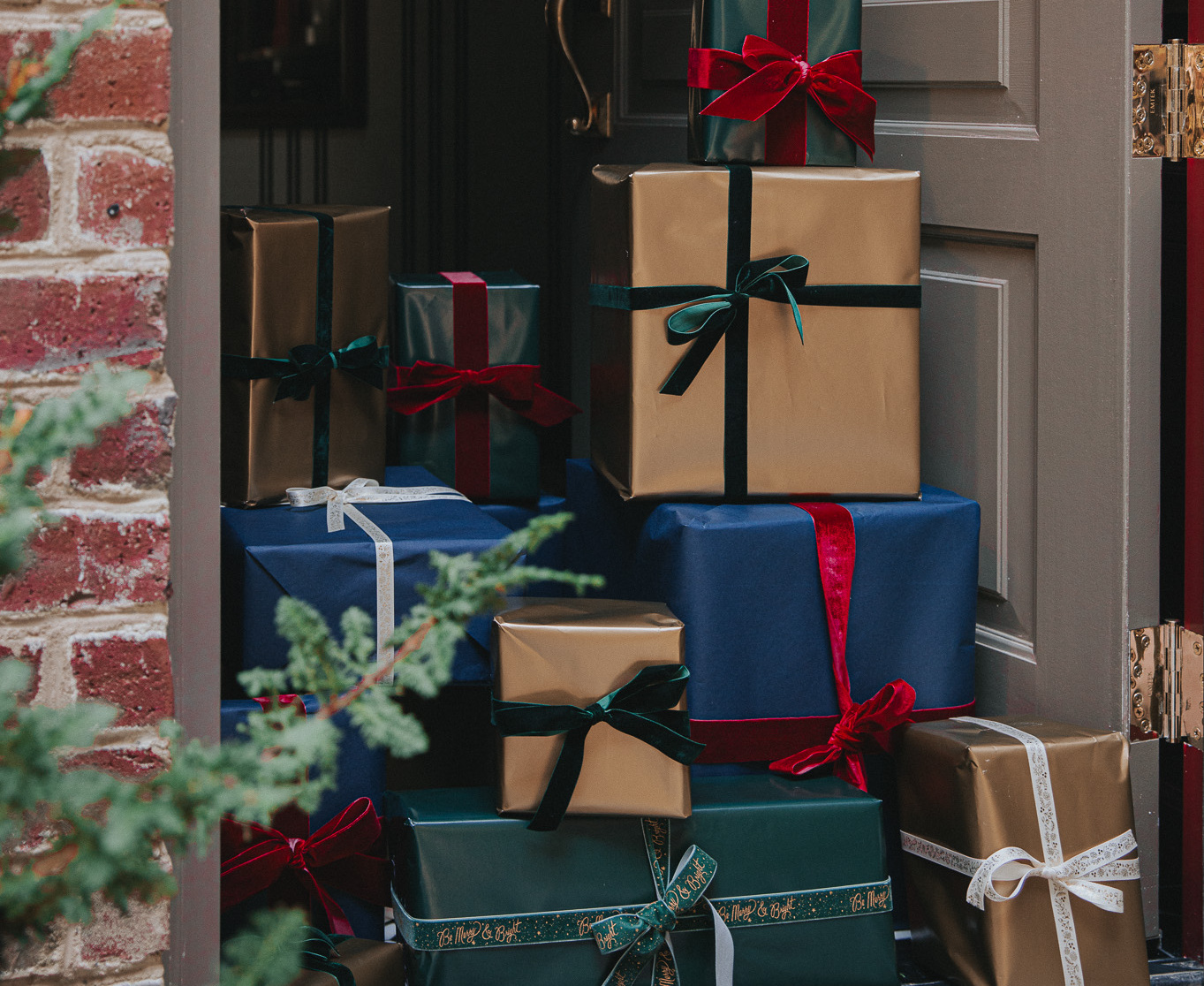
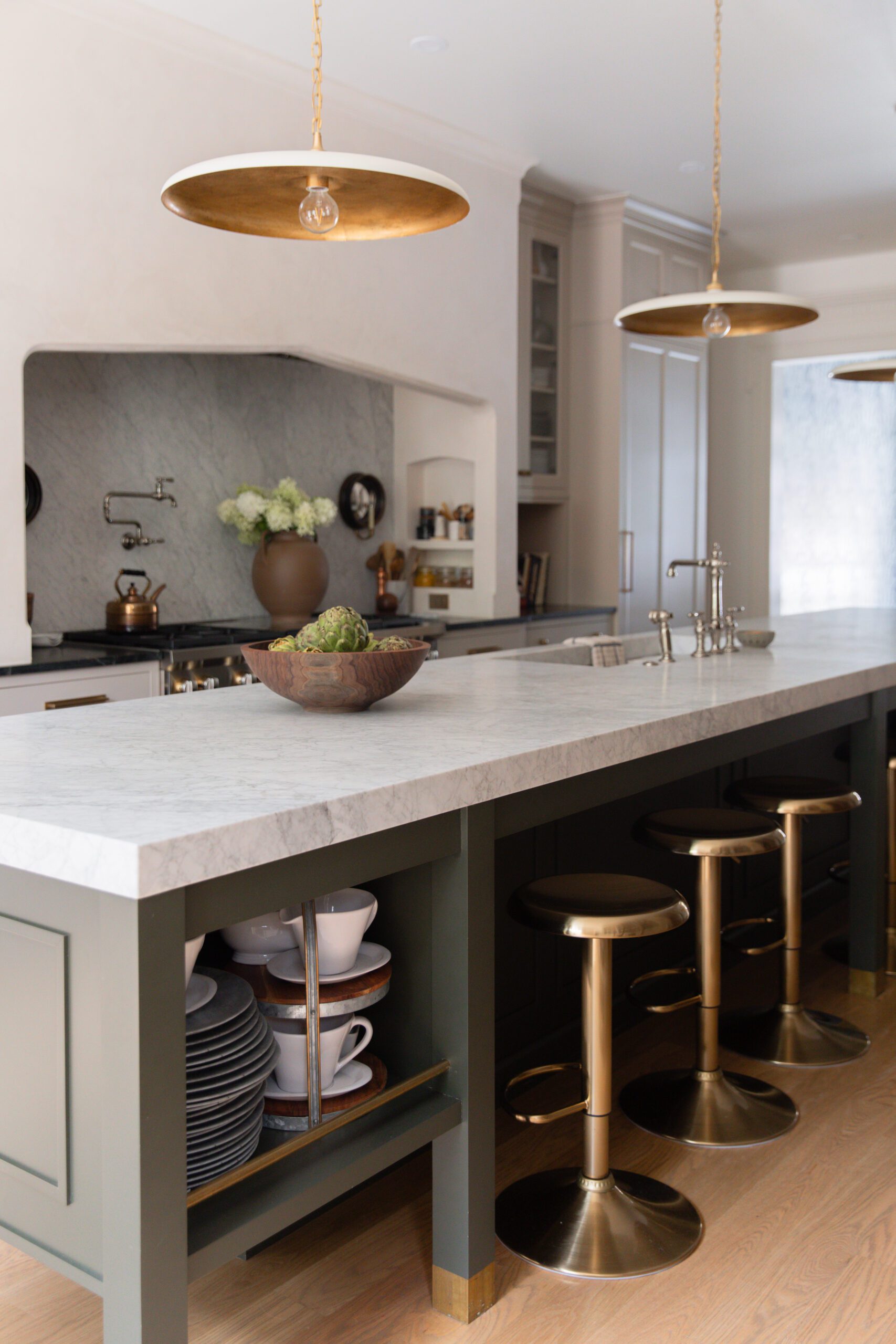

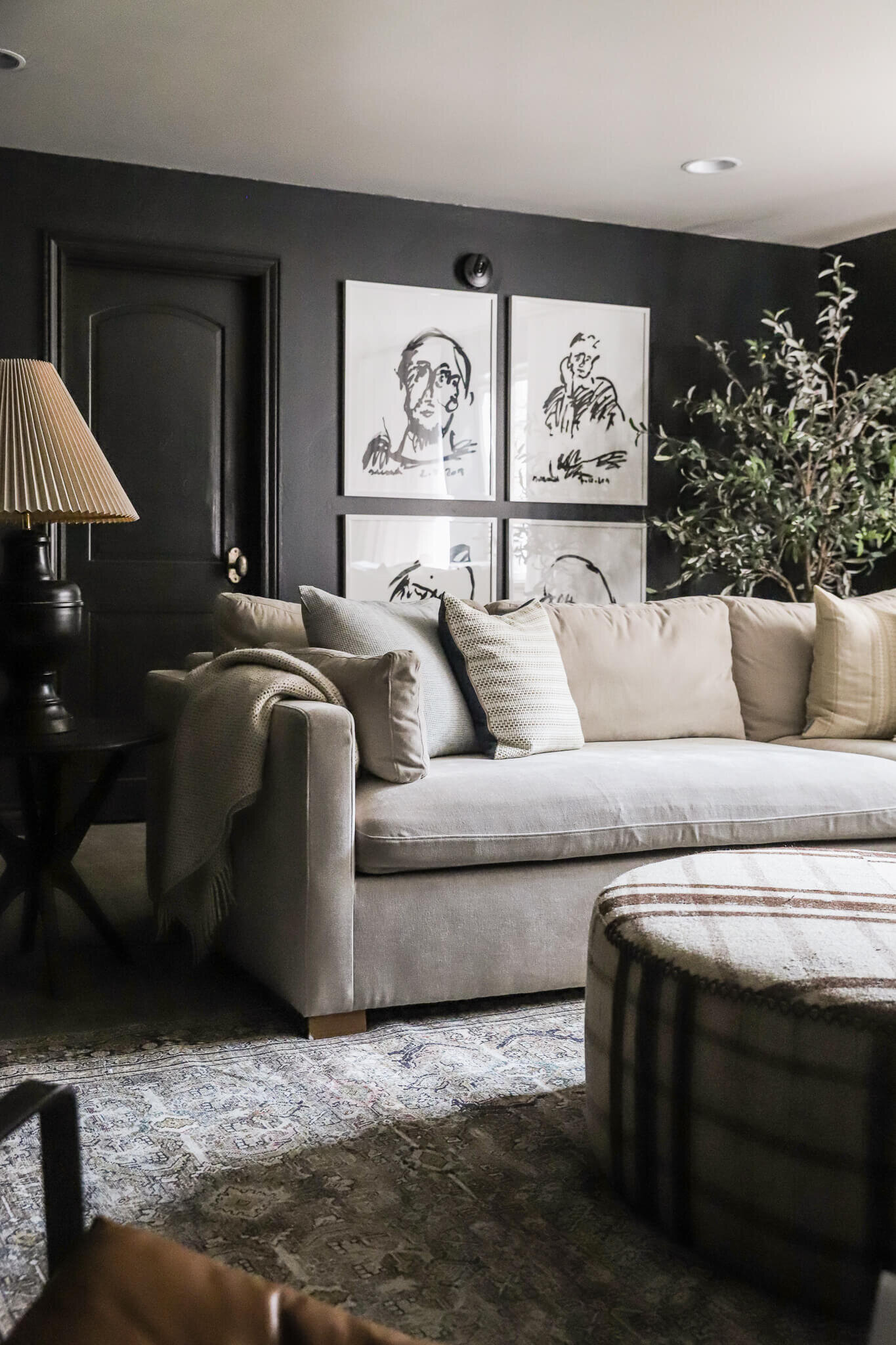
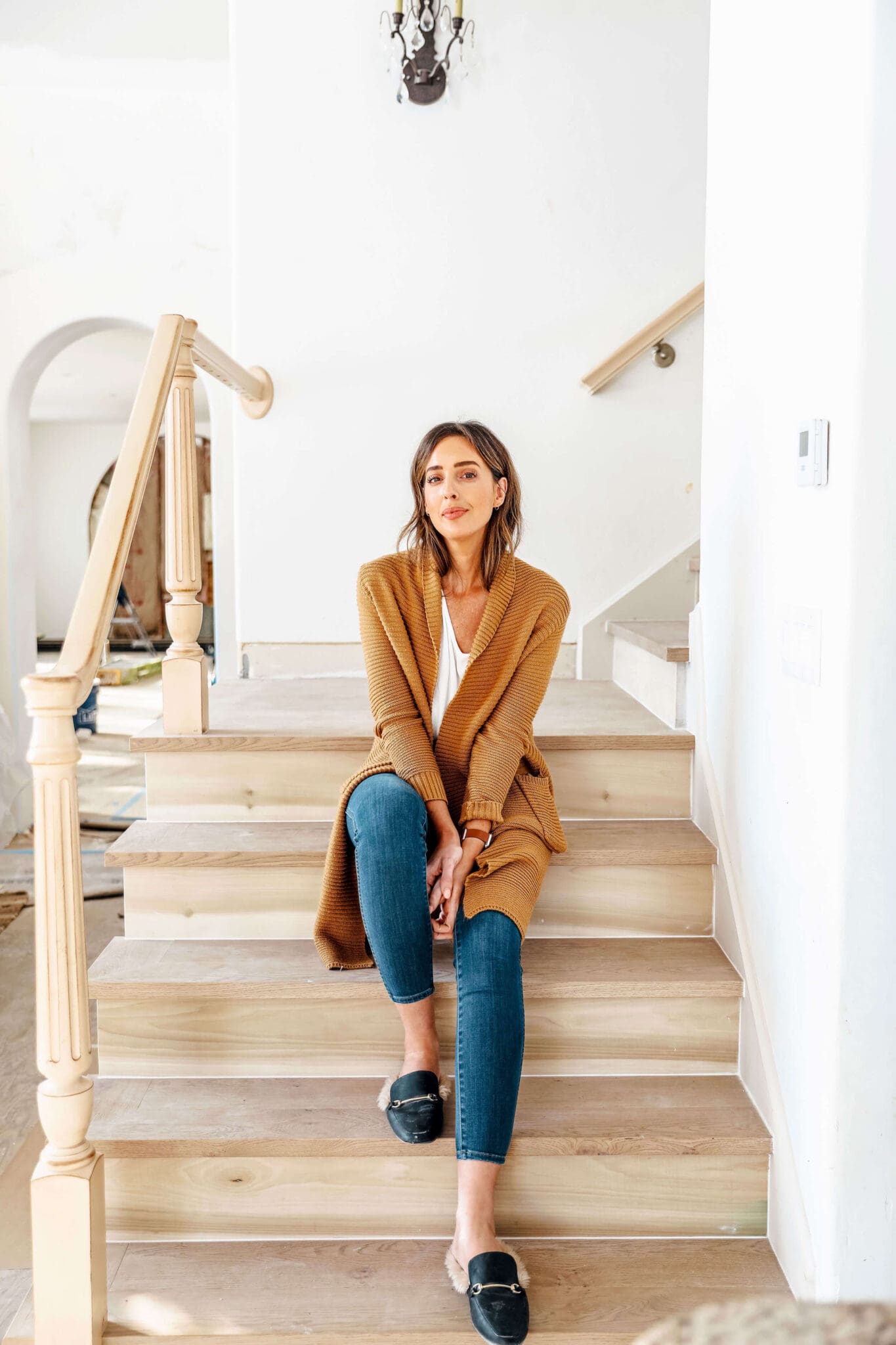

This question comes with a sense of urgency. We want to paint our entire study in Farrow and Ball- Downpipe. We really liked the sheen in Modern Emulsion. Do you think it would work to paint the built-ins, coffered ceiling, paneled wall, trim and doors in this sheen or should I do something different?
1000 yes